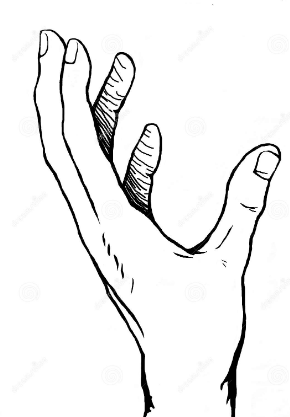Advantages of Being Left-Handed
If you’re left-handed (or ‘sinistral’), you might wonder why the world is designed for the right-handed (or ‘dextral’). Partly it’s because of tradition and superstition, but mostly it’s because 87% to 90% of the world population is right-handed. However, when you start trying to adjust to all of the phones, golf clubs, can openers, stringed instruments, scissors, cooking utensils and desks designed for right-handed people, you might just go mad and start thinking you’re the most forgotten minority in the world.
The good news is that left-handed people have many advantages. To start with, research shows that left-handers have higher success rates on driving tests than right-handed people. Statistics show that 57% of left-handers pass their driving test easily, while the percentage is 47% for right-handers. Some of the best drivers in the world have been left-handed, for example, Ayrton Senna and Valentino Rossi. If you’re left-handed, you can be proud of this skill of yours.
The fact that the last five US Presidents (except George W. Bush) have all been left-handed is also astounding. From Nobel Prize winners to Mensa members (the largest and oldest high-IQ society in the world), left-handers certainly dominate the world much more than their 10% share of the population would suggest. Looking at Mensa statistics, the figure of 20% of its members being left-handed suggests that they are more intelligent. Nobody is sure why this is the case. One possible reason is that they are challenged from the very beginning to come up with solutions to their problems in a right-handed world.
Left-handed people are also known to be better at some sports. Take tennis as an example. If you are a left-hander, you can gain an advantage by using the ‘leftie’ serve, which will create problems for right-handed players. There are similar advantages in boxing. Boxers are not used to dealing with opponents who lead from the left. Left-handed swimmers such as Mark Spitz were said to have a distinct advantage because they were more easily able to adjust to underwater vision.
Sinistrals are more likely to be successful than the dextrals in music, architecture and art in general. They have some pretty solid proof, too: Picasso, Leonardo da Vinci and Michelangelo were all left-handers. You may also add in Albert Einstein and Beethoven to the list of talented left-handers. Is there any evidence why this is the case? Daniel Geschwind is a specialist in neurobehavioural genetics at UCLA and has been investigating this. He knows that left-handers are using both sides of the brain when they are dealing with language. The fact that they are also using the right side of the brain creates more opportunities for creativity.
Lastly, left-handed people have always had to think more quickly, as they have always faced right-handed challenges. This pays off later in life because the communication between both of their brain hemispheres is much faster and more efficient. This is what makes multi-tasking so much easier for left-handers. They have a definite advantage in being able to process multiple streams of information. Left-handed people were ashamed of being ‘different’ in the past, and they were forced to use their right hands by their parent. This shame has long disappeared, but the mystery and fascination remain.

